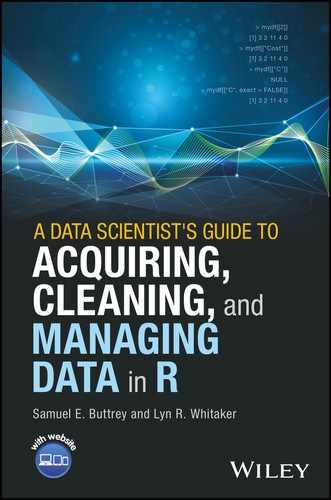Preface
Statisticians use data to build models, and they use models to describe the world and to make predictions about what will happen next. There has been a large number of very good books that describe statistical modeling, but these modeling efforts usually start with a set of “clean,” well-behaved data in which nothing is missing or anomalous.
In real life, data is messy. There will be missing values, impossible values, and typographical errors. Data is gathered from multiple sources, leading to both duplication and inconsistency. Data that should be categorical is coded as numeric; data that should be numeric can appear categorical; data can be hidden inside free-form text; and data can be in the form of dates in a wide number of possible formats. We estimate that 80% of the time taken in any data analysis problem is taken up just in reading and preparing the data. So, any analyst needs to know how to acquire data and how to prepare it for modeling, and the steps taken should be automatic, as far as possible, and reproducible.
This book describes how to handle data using the R software. R is the most widely used software in statistics, and it has the advantage of being free, open-source, and available on every major computing platform. Whatever software you use, you will find yourself facing the issues of acquiring, cleaning, and merging data, and documenting the steps you took. We hope this book will help you do these things efficiently.
Sam Buttrey and Lyn Whitaker
Monterey, California, USA
November 30, 2016
